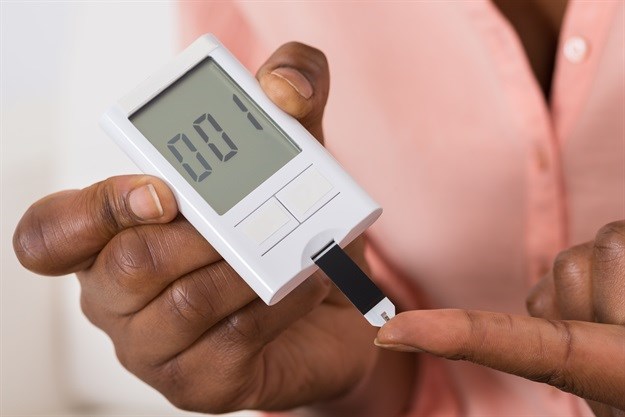Trending




 Sabre EMEA 2024 Awards: Razor PR, Retroviral top SA agenciesDanette Breitenbach
Sabre EMEA 2024 Awards: Razor PR, Retroviral top SA agenciesDanette Breitenbach
Elections 2024
Diabetes treatment goals still suboptimal

Statistics from the International Diabetes Federation’s 2015 update show that the total number of people with diabetes in Africa is expected to increase by 20 million in 20401, bringing the total to 34.2 million diabetic patients on the continent1. A figure that was 14.2 million in 2015 – it’s not over reaching to suggest that we are facing a diabetes pandemic. Globally the picture is as bleak with 642 million people expected to develop type-2 diabetes1 within this same timeframe. A disease that is associated with significant comorbidities that contribute to an increased risk of costly hospitalisations2; the logical response is to radically change the approach to the prevention, diagnosis and treatment of this disease.

Commenting on the severity of the illness and how it’s currently being managed, AstraZeneca CV/Met Medical Advisor, Arvind Hariram says, ”While existing medicines have been of great benefit in the management of diabetes, treatment goals still remain suboptimal3 and there’s a need for newer treatment options to manage this progressive disease which is responsible for someone dying every six seconds4 globally. While a staggering figure - we are entering a new era of diabetes care and have the potential to change the diabetes landscape. At AstraZeneca we are pushing the boundaries of science so that we might offer new treatment options to better manage this disease and we’re proud to have brought the first SGLT2 inhibitor to the South African market. A medication that works in the kidney by blocking the reabsorption of glucose which is then excreted in the urine;- it’s part of a new class of blood glucose lowering medicines. We believe this innovative approach will help improve the current unmet need.”

Speaking at the AstraZeneca Connecting Experts in Diabetes Forum in Cape Town last month, local key opinion leader and endocrinologist – Dr Sundeep Ruder made a strong case for education and advocacy in the treatment of diabetes, stating that science cannot be seen in isolation. He says, “With current research showing the impact of stress, job strain, sleep abnormalities and food security on increased risk of diabetes – there’s now an even stronger need for education to better manage the pandemic.”
Championing this notion, AstraZeneca has pioneered and funds The Early Action in Diabetes initiative – a multi-year, multi-stakeholder global collaboration launched in 2015 that aims to radically transform the world’s approach to Type 2 diabetes. High profile partners include the International Diabetes Federation, Primary Care Diabetes Europe and the World Heart Federation.

By design the programme is committed to translating evidence into practical policies applicable in low-, mid- and high income countries. It’s built on four pillars of early action, including prevention; early detection; early control; and early access. These pillars are firmly rooted in the evidence base of what is most valuable in reducing the economic, societal and personal burden of Type 2 diabetes – which accounts for 90% of cases5.
The most recent meeting of the Early Action stakeholders, staged last month, saw over 100 leading global diabetes experts from 25 countries gather in Rome for the 2017 Global Diabetes Policy Forum. Besides the agreement that the proportions of diabetes show no signs of relenting – the interconnectivity of metabolic, cardiovascular and renal diseases was a central theme.

Expanding on this, Dr Ruder explains that many individuals with cardiovascular (CV), renal or metabolic diseases have either symptoms or underlying pathologies associated with more than one of these diseases6. ”It’s quite uncommon for patients to have type-2 diabetes without other CV, renal or metabolic conditions6,” he says.
Supporting this claim – a cross-sectional study using data from the Diabetes Collaborative Registry (DCR) confirms that more than 95% of people with type-2 diabetes have at least one other CV, renal or metabolic condition and more than half (58.6%) of patients presented with at least three additional conditions6. The most prevalent individual conditions were hypertension, hyperlipidaemia, coronary artery disease (CAD) and chronic kidney disease (CKD) - 87%, 85%, 37% and 24%, respectively6.
More than this - people with type-2 diabetes have a two to three times greater risk of heart failure and are at an increased risk of having a heart attack or stroke7. Cardiovascular-related events are the underlying cause of death for more than half of people with type-2 diabetes, reducing overall life expectancy by 5 to 15 years8.

“It’s for these reasons that reducing CV risk is so complex yet so important. We know there is clinical overlap between these diseases and their associated complications, yet each condition is typically treated in isolation9. We are using this knowledge to redefine the way we are treating patients and it’s the way we are approaching this challenge that makes us different.”
The importance of lifestyle modification in the prevention of developing Type 2 diabetes cannot be underestimated and must be a primary focus of the management of the disease. This World Diabetes Day, AstraZeneca is advocating for healthy lifestyle change for all South Africans through its Yes2Life Pledge Campaign.
“We recognise that a healthier world begins with education to help individuals make informed decisions and navigate available tools and resources. Yes2Life is an extension of our Early Action initiative and we are asking South Africans what they will do to change their story and say Yes To Life. We are inviting them to commit to healthier eating, increased exercise, better stress management, more sleep and balanced living and to kick bad habits,” says Rodney Gillespie, Country President, AstraZeneca South Africa. “The programme also offers patient support to better manage diabetes and is available to all patients who have been prescribed an AstraZeneca diabetes product.”

Diabetes targets set by the United Nations and the World Health Organisation (WHO) include a global reduction in premature mortality from diabetes of one third by 2030 and a 25% reduction in the frequency of diabetes-related complications detected at diagnosis10. “Excellent work has been started to raise awareness levels of the diabetes challenge but one in 11 adults have diabetes11 and one in seven births is affected by gestational diabetes11. Clearly we have a long way to go if we are to reach these WHO targets and we look forward to playing our part to tackle the problem effectively,” concludes Gillespie.
For further information on Diabetes go to http://www.yes2life.co.za/.
References:
1. IDF Diabetes Atlas. Seventh edition.2015
2. Khalid, J. M., Raluy-Callado, M., Curtis, B. H., Boye, K. S., Maguire, A. and Reaney, M. (2014), Rates and risk of hospitalisation among patients with type 2 diabetes: retrospective cohort study using the UK General Practice Research Database linked to English Hospital Episode Statistics. Int J Clin Pract, 68: 40–48. doi:10.1111/ijcp.12265
3. Stark Casagrande S, et al. The Prevalence of Meeting A1C, Blood Pressure, and LDL Goals Among People With Diabetes, 1988–2010. Diabetes Care 2013;36:2271–2279
4. IDF Diabetes Atlas. Seventh edition.2015
5. Definition, diagnosis and classification of diabetes mellitus and its complications. Part 1: Diagnosis and classification of diabetes mellitus. Geneva, World Health Organization, 1999 (WHO/NCD/NCS/99.2).
6. LoCasale RJ, Gannedahl G, Wang J, et al. Describing the cardio-renal-metabolic patient within the Diabetes Collaborative Registry. Poster presented at the American Diabetes Association 77th Scientific Sessions, 9-13 June 2017, San Diego, CA, USA.
7. Nwaneri C, Cooper H, Bowen-Jones D. Mortality in type 2 diabetes mellitus: magnitude of the evidence from a systematic review and meta-analysis. The British Journal of Diabetes & Vascular Disease. 2013;13(4):192-207.
8. Morrish NJ, et al. Mortality and causes of death in the WHO Multinational Study of Vascular Disease in Diabetes. Diabetologia. 2001;44 Suppl 2:S14-9. Available online: https://www.ncbi.nlm.nih.gov/pubmed/11587045.
9. Dunn JD, Benton WW, et al. The Burden of Hyperkalemia in Patients with Cardiovascular and Renal Disease. Am J Manag Care. 2015; 21: S307-S315.
10. WHO Global NCD Target Reduce Premature Deaths From NCDs
http://www.who.int/beat-ncds/take-action/policy-brief-reduce-premature-deaths.pdf
11. IDF Diabetes Atlas. Seventh edition.2015





